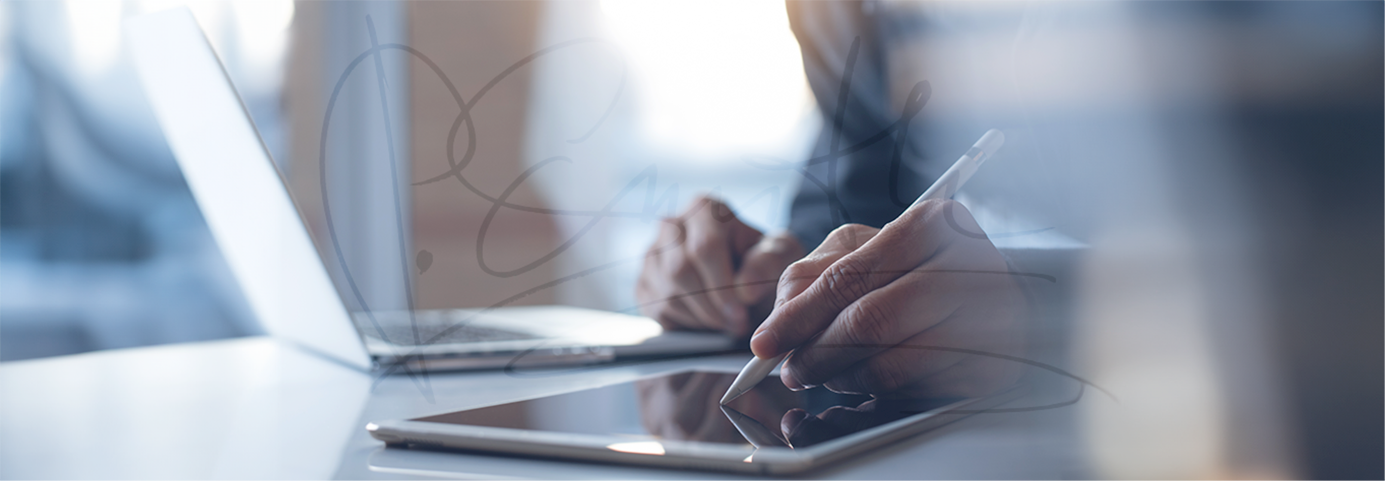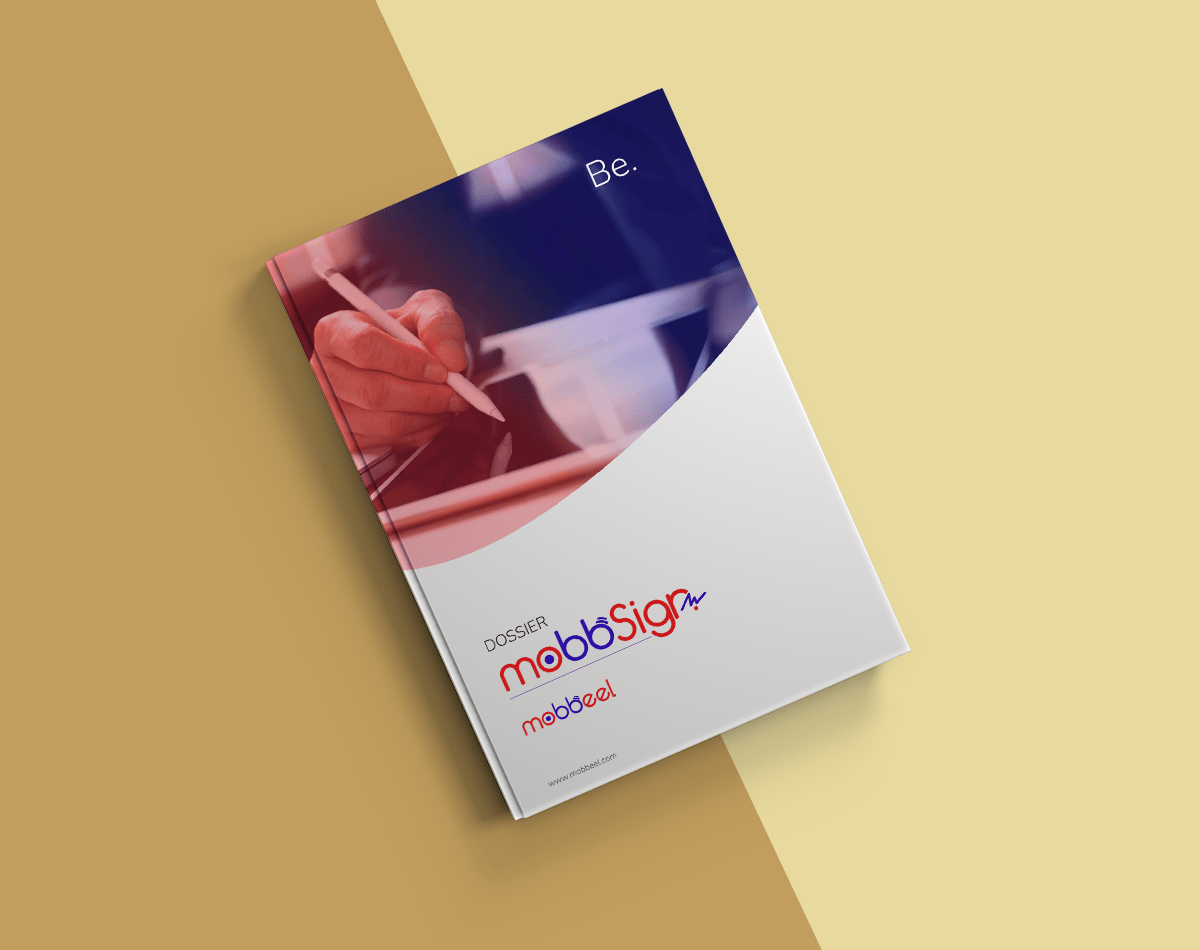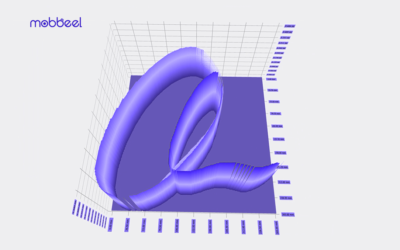The signature has been part of humanity since prehistoric times. From the handprints on cave paintings to the strokes of an artist’s brush, the signature has surpassed time, symbolising identity, purpose and commitment.
In ancient times, the need to verify documents and messages led to the creation of more sophisticated methods. In Egypt, pharaohs used cylindrical seals with hieroglyphs to mark their approval on official documents. These seals, made of precious stones or clay, were unique and represented the authority of the bearer.
During the Middle Ages, European monarchs and nobles used wax seals to ensure the authenticity of their charters and decrees. These seals, usually impressed with specific and distinctive rings, validated the document’s provenance and prevented tampering with it. Wax seals became a symbol of power and status, and their use spread rapidly among the nobility and the Church.
Gutenberg and the advent of the printing press
With the advent of the printing press in the 15th century, the need to sign documents became more accessible. The handwritten signature began to gain popularity, and its use spread beyond the nobility and clergy to merchants and common people. The handwritten signature was introduced in agreements, wills and all kinds of legal documents, symbolising the acceptance of the signatory.
Nevertheless, the signature has not remained stagnant. It has evolved into what we now know as a biometric signature. This advanced form of signature is capable of capturing the essence of your client’s signature, ensuring its authenticity like never before.
Biometric signature has found new applications in more modern industries such as transport, logistics, distribution, and parcel delivery. These areas require secure verification methods to guarantee the identity of the signatories and the intent of the parties involved, giving rise to the biometric signature on the go.
What is biometric signature on the go?
The mobile biometric signature represents a significant evolution in the field of security and administrative efficiency. Unlike traditional signatures, which can be easily forged, biometric signature on the go uses the unique features of each individual to authenticate a person’s identity and is considered advanced electronic signature.

Designed for the mobile environment, this technology offers exceptional convenience. With just a smartphone or tablet, users can sign documents on the go, eliminating the need for additional devices and allowing for anytime, anywhere access.
The integration of this type of signature guarantees high-security standards. Biometric data, being extremely difficult to duplicate, ensures a level of authentication security that surpasses handwritten signatures. Moreover, advanced encryption systems safeguard this data from unauthorised access, providing an additional layer of protection.
Beyond the scribble
When signing digitally, numerous elements are recorded beyond the capture of the simple signature. One of the most basic and crucial aspects is the capture of X and Y coordinates. These coordinates record the exact position of the signature at any given moment, creating a detailed map of the stroke.
The pressure exerted by the signer is also measured throughout the process. This pressure varies throughout the signature and is unique to each individual, adding a distinctive feature that is difficult to replicate. In addition to pressure, velocity and acceleration are recorded on both the X-axis and Y-axis. The velocity on X and Y reveals how fast the signer moves in different directions, while the acceleration on these axes shows how that velocity changes over time.
Another relevant aspect of the biometric signature in mobility is the number of strokes used by the signer. Some people sign in one continuous stroke, while others make several separate strokes. The order and duration of these strokes are also recorded, giving a complete picture of the signing process. Each of these elements contributes to creating a unique pattern that is directly associated with the signatory.
Technical components of the biometric signature on the go
In order to implement the biometric signature on the go, it is essential to have certain components and technologies that ease its capture and validation securely and efficiently. The key elements are:
Touchscreen device: it is necessary to have a device equipped with a touchscreen that enables accurate signature capture. It can include smartphones, tablets, and laptops with touchscreens.
Supported operating system: the device must operate under one of the following systems:
- Android: a wide variety of devices and applications available.
- Windows: robust support for business and productivity applications.
- iOS: high security and performance on Apple devices.
- Web: through touch-enabled browsers, facilitating signing on laptops and other touchscreen devices.
What is the process for signing delivery notes and deliveries?
It works as follows:
When signing a document, the client application retrieves (or generates) the document to sign and passes it to our signature SDK (MobbSign).
At this point, the MobbSign SDK takes control and displays the document. The signer can review the document to be signed directly on the tablet with the usual functionalities of a PDF viewer (turn pages, zoom, etc.).
Optionally, from the moment the delivery note or delivery document is opened, the system will be able to obtain the geolocation of the device. Together with the location, the data of the means by which it was obtained will also be saved, as well as the estimated accuracy of the location.
When the customer is ready to sign with their biometric signature, this option will be selected and from that moment onwards they will be able to sign on the touch screen of the device.
Once the user is satisfied with his signature, the biometric signature process of the document will proceed
To do so:
All the biometric information provided by the user’s signature (time, position, pressure of each point, etc.) is taken, which will make it possible in the event of a claim in the future to reproduce the way in which the user signed and validate the authorship.
A hash is calculated with all the information contained in the document. This hash can then be used to validate the integrity of the document (i.e. that it has not been altered since it was signed).
positive
It will also include, if it has been opted for, the location where the document is signed, obtained according to the process described above.
The concatenation
All this information (biometric signature + hash of the document + location) is concatenated and encrypted with the public key that was generated and distributed to the mobile devices. Thanks to the characteristics of asymmetric key encryption, the only way to decrypt this information and recover the original information is with the associated private key, which is kept under custody and is not available to any of the signing parties.
Furthermore, an electronic seal certificate is used to construct the electronic signature according to the PAdES (PDF Advanced Electronic Signature) standard which allows the signature to be validated by PDF reader applications (such as Adobe PDF) and, optionally, a time stamp can be used to guarantee the time at which the signature was made.
As soon as this information is encrypted and embedded in the document the original signature information is discarded and is neither stored nor sent.
This process can be repeated as many times as necessary in case there are several persons who have to sign, e.g. carrier and receiver of the product. It should be noted that the entire signature process is carried out inside the mobile device, which acts as a black box whose output is already the document with the encrypted biometric signature. This avoids having to send the biometric signature to a server, which could create problems from a legal and privacy point of view regarding the use and storage of the signature.
Once biometrically signed, the document is passed back to the client application that takes control over it. This application will probably send it to other systems for storage, safekeeping, etc.
Recommendations for a good signature experience
To improve the user experience, a number of recommendations should be taken into account:
- We recommend allowing signing on the entire available surface of the screen rather than forcing the user to sign in a small box.
- Once the signature is completed, the image of the signature will be scaled and placed in the coordinates that were indicated as input parameter next to the document. It is also possible not to indicate fixed coordinates where the signature will be placed and leave the client the possibility to change the size and place it themselves. To capture the signature, the document will be kept in the background so that the user does not lose sight of what their is signing at any time.
- In general, we recommend using an Android tablet with its own stylus technology, Windows tablets or an iPad with an active stylus capable of capturing pressure instead of using a finger or capacitive pen on a generic Android tablet or iPad. Note that if an active stylus is not available, the signer can be detected and identified but in this case the pressure would not be captured.
Furthermore, this type of technology allows the hand to rest on the tablet while signing as the SDK is able to distinguish the input produced by the pen from that produced by hand contact and only take into account the former (‘palm rejection’).
WYSIWYS concept in biometric digital signature
The WYSIWYS concept, which means ‘What You See Is What You Sign’, is becoming increasingly important in the field of delivery note and product delivery management. This principle ensures that the content of the delivery note or delivery document shown to the recipient at the time of signature is exactly what is being approved. In industries that handle large volumes of products and transactions, maintaining integrity and accuracy in the signing process is essential.
WYSIWYS ensures that product details, quantities and delivery information are accurate and properly documented before the signature is completed.
Integration of the biometric signature component
The integration of the component into digital systems is done through SDKs. These kits allow biometric functionalities to be incorporated into existing applications without the need to develop these capabilities from scratch.
The SDKs can be adapted to various environments, including web applications and native platforms such as Android, iOS and Windows.
Advantages of implementing and using electronic signature with biometrics in face-to-face processes
Operational efficiency
The electronic signature optimises operational efficiency. Capturing and verifying digital signatures through biometrics enables the automation of processes that previously required physical paperwork and multiple manual steps. For example, in product and parcel delivery, delivery drivers can sign biometrically directly on the mobile device, speeding up delivery confirmation and reducing the time needed to process and archive documents.
Error reduction
Other benefits include reducing errors and improving traceability. The biometric signature ensures that documentation is correctly signed and associated with the right person. Integrating this electronic data with management systems enables more efficient and accurate tracking of delivery and logistics processes, facilitating the resolution of potential incidents and providing a clear record.
Easy and fast integration
Another remarkable aspect of the electronic signature of delivery notes is the speed with which it can be implemented. As it is based on SDKs, integrating this technology into existing processes is agile.
It allows companies to adapt their operations to new technological requirements without large investments or lengthy adaptation times. The solution can be deployed on mobile devices, facilitating its use in mobility scenarios where workers are constantly on the move, such as product delivery and parcel management.
Legal validity
In terms of legal validity, the biometric signature complies with the requirements established by relevant regulations, such as the eIDAS Regulation. These regulations ensure that the electronic signature has the same validity and legal effect as a traditional handwritten signature.This ensures that electronically signed documents are accepted in legal proceedings and gives companies and their customers greater confidence in the validity and security of the transactions carried out.
Increased productivity
In addition to legal validity, biometric signature on the go increases productivity. Process automation through optimised electronic signature reduces the time associated with manual document management.
The adoption of biometric signature in face-to-face processes also improves the user experience.
The future of signing is green, how digital signature on the go reduce paper usage
One of the most notable benefits of digital signature is the reduction in the use of paper.
Traditionally, signing documents involved a manual process that required printing, signing by hand and then scanning or sending by post. This process is laborious and generates a lot of waste paper and other associated materials. The transition to electronic signature eliminates these steps, allowing documents to be signed and managed entirely in digital format.
As mentioned, digital signature uses encryption technologies to ensure the authenticity and integrity of documents, eliminating the need to print copies for archiving or review. It not only reduces the demand for paper but also reduces the need for physical storage of documents in offices and archives.

The environmental benefits of digital signature are clear when considering the cumulative impact of traditional practices. As more organisations adopt this technology, the savings in paper consumption translate into less deforestation and less waste. The future of digital signatures is intimately linked to greater environmental awareness and corporate responsibility.
Offline mode for no internet connection environments
The solution can perform signature processes in environments where the device does not have an internet connection at the time of signing, such as offline mode. Therefore, it allows users to sign documents without the need to be connected to the internet, guaranteeing the integrity and authenticity of the signature made in offline environments and the synchronisation of data when the connection is re-established.
How can biometric signature on the go to be implemented in logistics, parcel and distribution companies?
In logistics, biometric signature on the go can be applied to receive and deliver goods. For instance, drivers can use mobile devices with biometric readers to digitally sign delivery and collection documents, ensuring the user’s identity is verified before completing a transaction. This practice improves inventory accuracy and avoids human error.
This technology is also applied to bill of lading. In this sense, the bill is signed by each of the journey managers following it: from the warehouse manager who signs the bill when the lorry is loaded to the signature of the lorry driver when it arrives at the delivery unit to the signature of the delivery driver when it is delivered.
In addition, parcel companies and private postal operators can leverage biometrics to optimise dispatch and delivery processes. Delivery drivers can quickly validate the identity of recipients and confirm the correct delivery of parcels with signature, just as RD Post does. It is especially useful in high-turnover environments or when handling large volumes of parcels, ensuring that each parcel reaches the right person and that all deliveries are properly recorded.
Biometric signature can also be a valuable asset in returns management. Manual signature can be illegible or subject to errors, so digital signature offer a more accurate method of verifying the identity of the customer who is returning a parcel.
Furthermore, biometric signature can be integrated with transportation management systems to facilitate more effective visibility and tracking. For example, a system can automatically update the status of a shipment based on the recipient’s biometric signature, reducing the time required to manually record these updates and improving overall process efficiency.
Reach out if you would like to integrate a biometric signature on the go solution for delivery note and product delivery management. We can provide you with technology that ensures more secure delivery confirmation, improving traceability and customer satisfaction.

I am a curious mind with knowledge of laws, marketing, and business. A words alchemist, deeply in love with neuromarketing and copywriting, who helps Mobbeel to keep growing.

PRODUCT BROCHURE
Discover our biometric signature solution
Provide your customers with the option to easily and ecologically sign documents anywhere and anytime using our biometric signature, which is considered an Advanced Electronic Signature with full legal validity.




